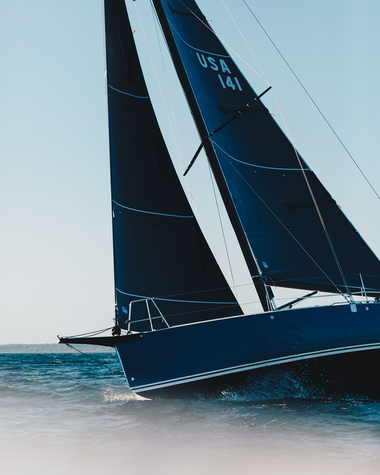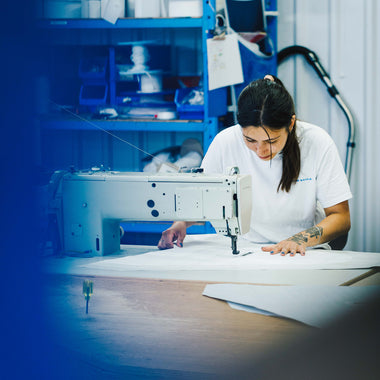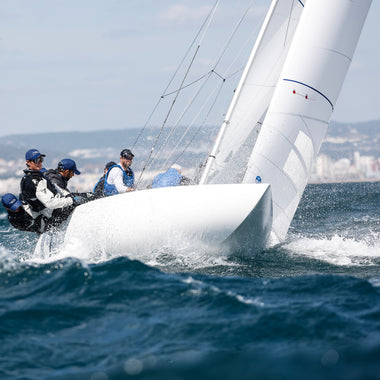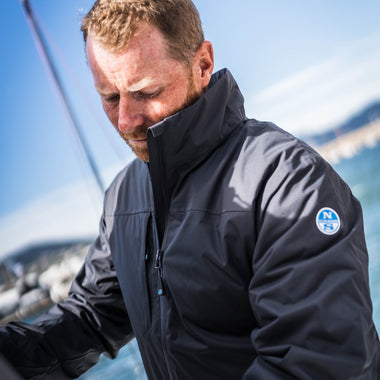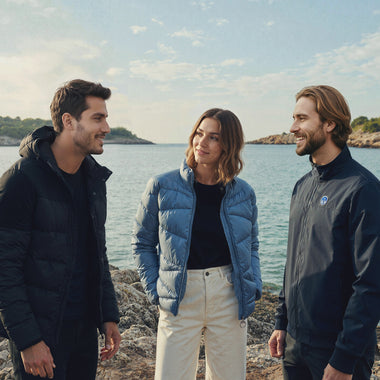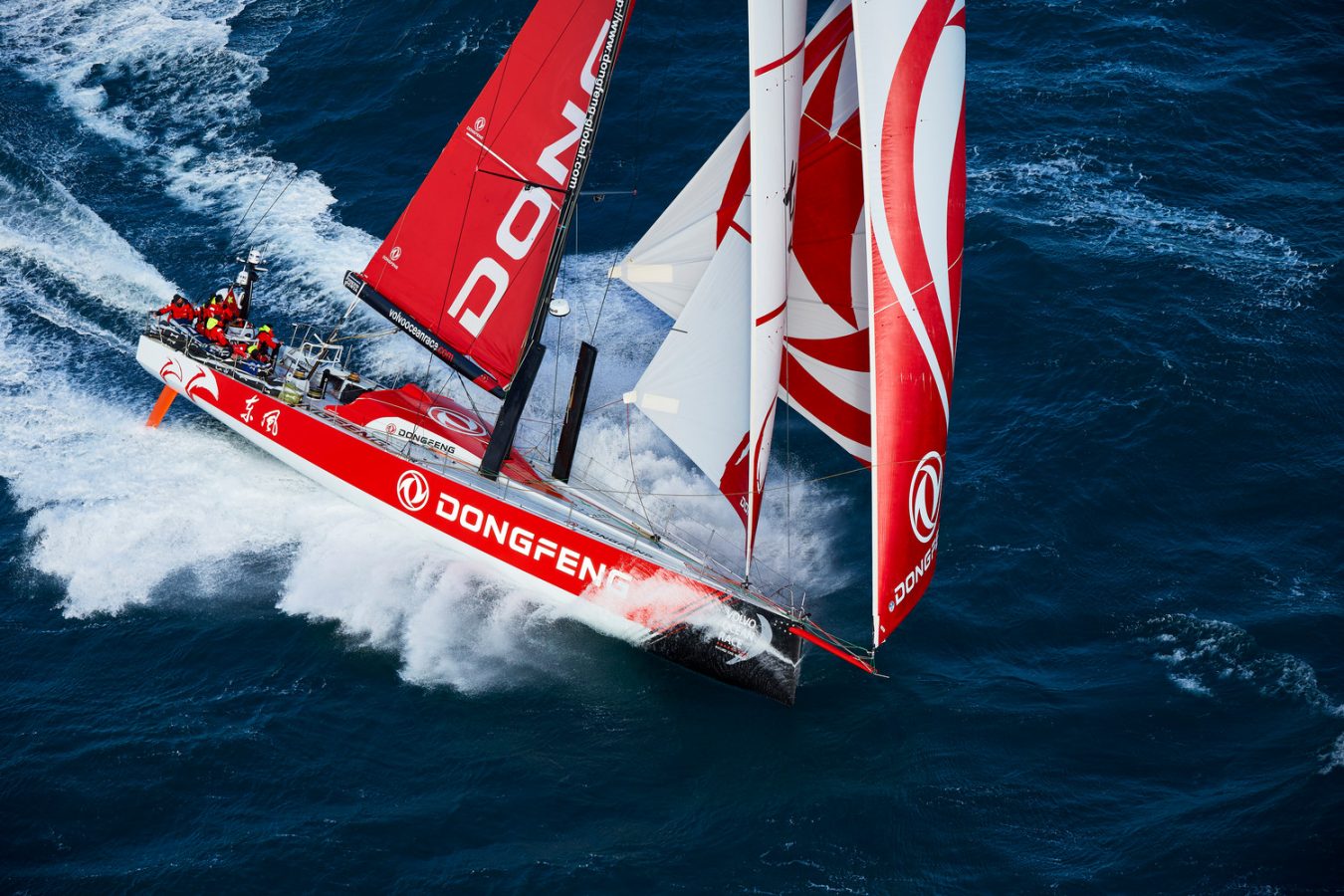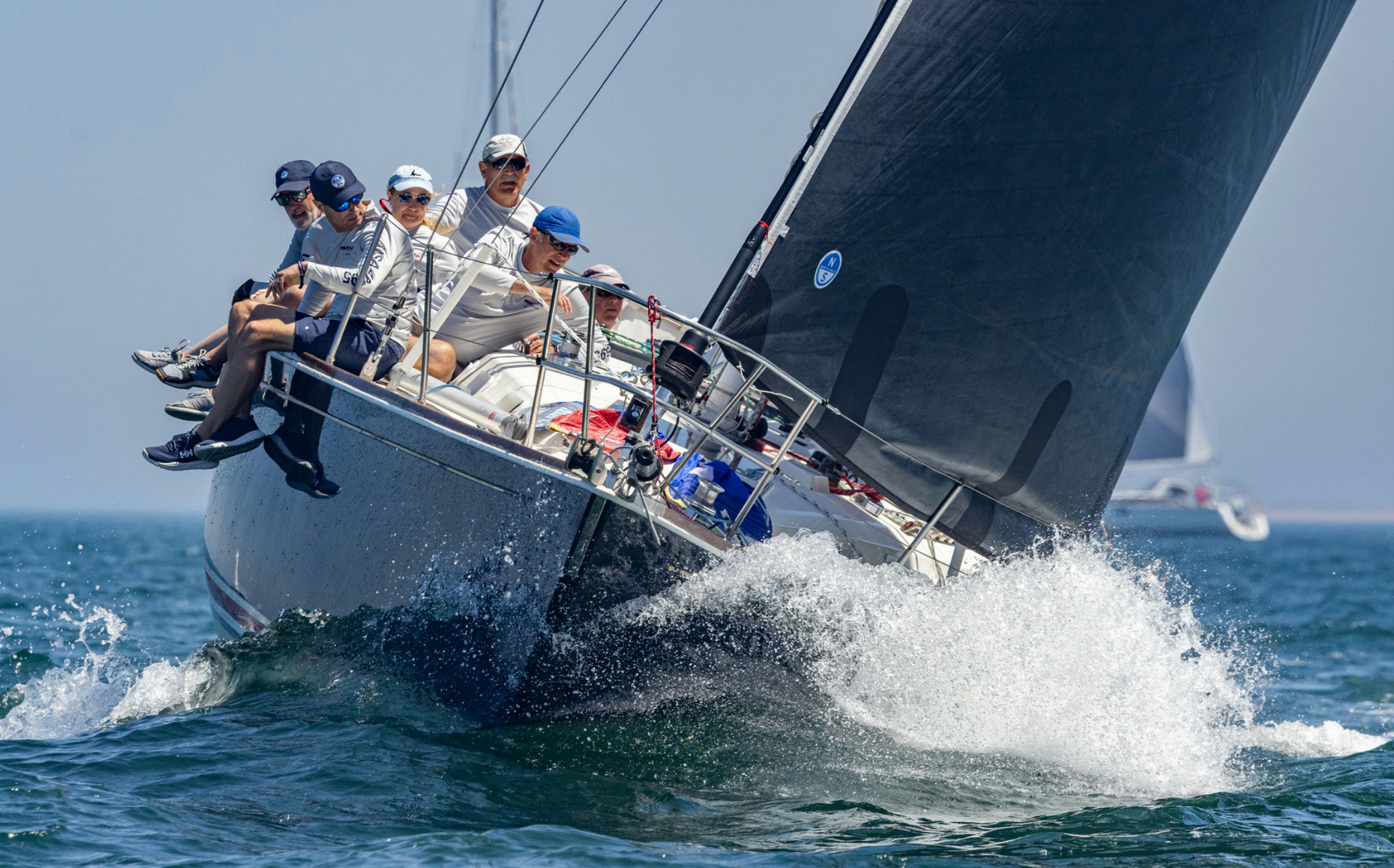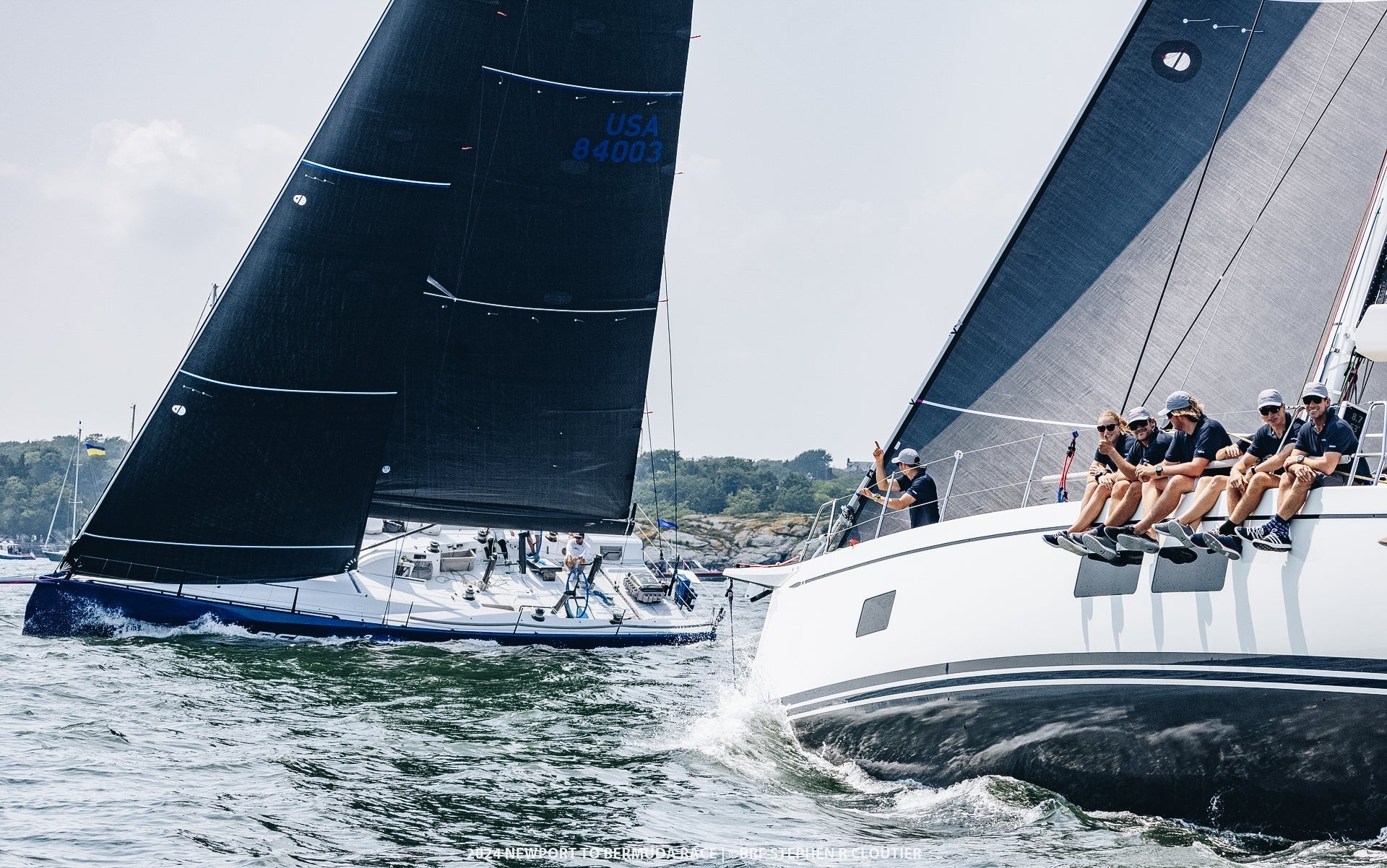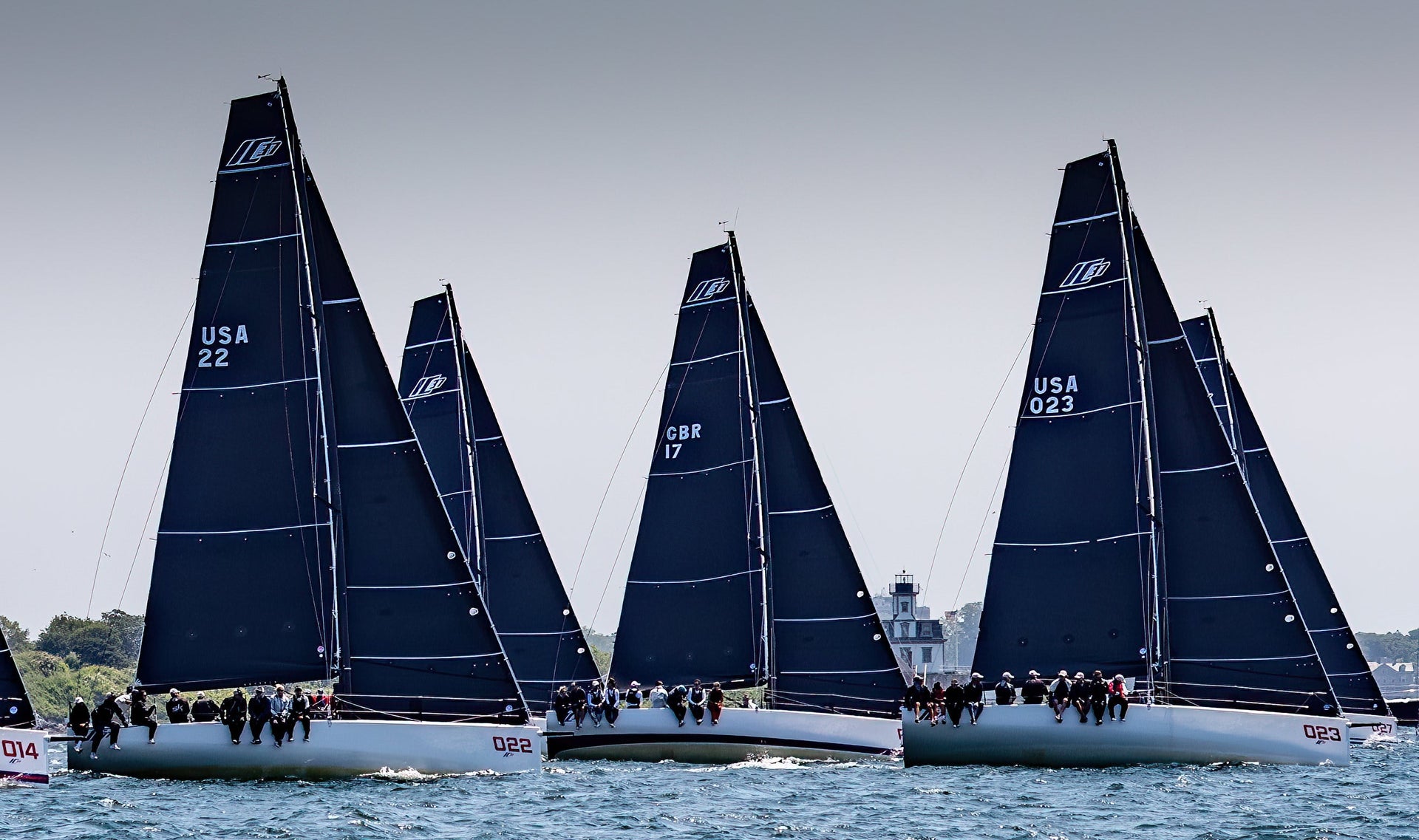8 THINGS TO KNOW ABOUT THE VOR SAIL INVENTORY
8 THINGS TO KNOW ABOUT THE VOLVO OCEAN RACE SAIL INVENTORY

North Sails have powered eight out of nine Volvo Ocean Race winners to victory since 1989 – here are 8 things you should know about the bespoke sails designed and manufactured 2017-2018 Race.
1 ) Paneled vs. 3Di Composite
Instead of assembling cloth panels into a particular sail shape, the Volvo Ocean Race sails are composites. 3Di material “tapes” are laid in a specific arrangement, offering stable structure to the sail where it is needed most. This leads to an unmatched weight to stiffness ratio and advanced durability. This is a patented process at North Sails, the exclusive sail provider to the Volvo Ocean Race.
2) Above and Below Deck
Sail design today encompasses a lot more than it used to. When a new boat is commissioned, design stakeholders will often bring North Sails into the early stages of planning and collaborate to produce a well balanced boat. In the case of the VO65, Farr Yacht Design worked together with North Sails and Southern Spars to create a cohesive package where the hull, appendages, spars, and sails were each designed with the next in mind. The effect of this relationship sees each team receive a bespoke VPP (Velocity Prediction Program), which illustrates the potential performance of their boat according to inputs such as true wind speed and angle, and further, advises the proper sail to be used in each condition.
3) Eight Piece Puzzle
Similar to a jigsaw puzzle, the pieces of a sail inventory assemble to create a package. The VO65 eight-piece sail inventory combines to form a clear performance landscape, with the same options available to all teams. While the sails are identical, the difference is in how they are used – the slight variations of angle, trim and tuning. Each team will push their boat, rig and sails slightly different, inching out every bit of performance possible. The VO65 teams will start in October with all-new sails. So what’s changed?
4) We Love Feedback Loops
Sailors are experts at a lot of things – boiling water for coffee at 20 knots, bathing in a rainstorm, dressing up like Neptune and oh – making boats go fast. Feedback, including lots of data from the 2014-15 edition of the race, proved there was a need for another sail in the VO65 One Design inventory, pushing the final count from seven to eight. North Sails designer, Gautier Sergent explains:
“The teams were forever changing configurations in 10-15 knots upwind and tight reaching. When using the masthead zero the teams were pushing the boat too hard. Changing to the J1 made them under powered. So one of the changes we made for 2017 was to add a J0, which fits between the MHO and J1 and covers that range.”

5) Domino Effect
The introduction of a J0 led to a few key changes in the new inventory, most substantially to the Fractional Code Zero (FRO). Previously used in a very small upwind range between the J1 and masthead zero, the addition of a J0 meant it could now be a dedicated downwind sail. The 2017-18 FRO is made of 3Di FORCE, a new downwind application of North Sails 3Di composite sailmaking. The sail is more stable with a 3Di structure throughout an increased range of conditions, a benefit sought by designers and sailors alike. The added bonus of 3Di is the sails are more easily repeated, as molded sails offer more streamlined manufacturing and assembly than their panelled counterparts. Each type of sail can be made in sequence: the mold is set once and the sails are consolidated one by one, ensuring One Design standards are met.
Nathan Quirk, head of the Sail Loft Division for the Volvo Ocean Race explains: “The process of producing the raw sail shape is now fully automated and several quality control steps are taken along the way to ensure consistency. In the past, manually joining panels to produce a sail meant no two sails were ever identical. North Sails 3Di has solved this problem and is the only option for a One Design race at this level.”
6) Surf’s Up
The Volvo Ocean Race 2017-18 round-the-world course features three times as much Southern Ocean sailing as the last. That means twice as many skivvies for the crew, big breeze and even bigger swell. Thanks to extensive weather routing, the new VO65 sail inventory is well suited for a decidedly downwind course. The downwind FRO we mentioned? It’s full shape and straight exit are designed to harness the wind and send them surfing down 20ft swell.
7) Fortune Telling
There is no crystal ball when it comes to predicting a race around the planet, but sail designers can study the race route and draw decision making data from historical weather patterns.
“We have done extensive routing with the two inventories, the 2014-15 inventory and the new one, to ensure we were using the right balance. By introducing the J0 and changing the FRO, we’ve noticed there are a lot less sail changes required,” Gautier explained. “Typically, with the addition of one more sail, the crew are quick to point out that it’s one more sail to handle, one more sail to stack. After looking at the inventory as a whole and assessing the available configurations, we found that the amount of sail changes actually reduces significantly with the addition of the J0.”
8) Easy Maintenance
The VOR Boatyard travels with the teams, setting up and breaking down at each stopover port. This team of riggers, builders, and sailmakers receives the boats as they arrive, and work around the clock to maintain and repair areas of wear and tear. The sail loft crew were adamant that, no matter how fast they were, the sails had to be simple to care for.
“90% of all damage to sails happens during manoeuvers and sail changes,” Nathan said. With the knowledge gained from the last race, we were able to make subtle changes to the finishing of the sails to improve handling and speed up service. With between 60-80 sails to check each stopover the sails need to be reliable.”
The luff length on the code sails was reduced to allow for easier sail “peels” or changes, and a relatively simple fitting was added to the A3 (the biggest sail on board) called an integrator. This enables top-down furling which is preferred over bottom-up for larger running sails due to a faster, neater result and less chance of damage.



